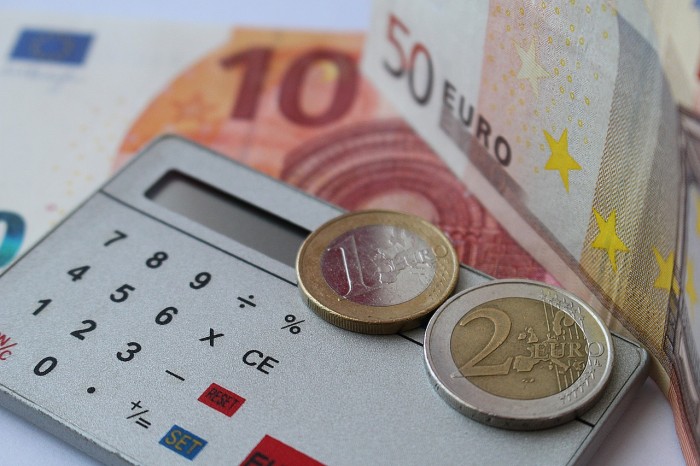Forex trading involves exchanging one currency for another to make a profit. This guide simplifies the key concepts, covering terms like lots, pips, trading time zones, profit calculation, and risk management, to help you get started. Let’s dive in!
What is Forex Trading?
At its core, forex trading involves exchanging one currency for another. Unlike stock markets, which focus solely on company shares, the forex market revolves around currency pairs. For example, when trading the EUR/USD pair, a trader buys euros while simultaneously selling US dollars.
The forex market operates 24 hours a day, five days a week, allowing traders from all over the world to participate at any time. Whether you’re considering forex trading in Singapore, Egypt, USA, or South Korea, there are multiple trading sessions to choose from.
Understanding the Basic Terminology
Let’s discuss some terms that forex traders should know.
Lot Size
The concept of "lot size" refers to the standardized quantity of currency units one can trade. In forex, lots typically come in three main sizes: standard, mini, and micro. Here’s a breakdown of what each type means:
Micro Lot
- Size: 1,000 units of the base currency.
- Example: When trading a micro lot of the EUR/USD pair, a micro lot is equivalent to €1,000.
- Pip Value: Each pip movement is worth approximately $0.10.
- Best For: Beginners and those looking to minimize risk, as smaller lot sizes mean smaller potential gains or losses.
Mini Lot
- Size: 10,000 units of the base currency.
- Example: For the EUR/USD pair, a mini lot would be €10,000.
- Pip Value: Each pip movement is worth about $1.
- Best For: Traders with a slightly larger account size or those who want more exposure than a micro lot offers but still aim to manage risk effectively.
Standard Lot
- Size: 100,000 units of the base currency.
- Example: For the EUR/USD pair, a standard lot would be €100,000.
- Pip Value: Each pip movement equates to about $10.
- Best For: Experienced traders or those with larger accounts, as the higher pip value means potential for both significant gains and losses.
What is a Pip?
In forex trading, a "pip" is a unit that measures the change in value between two currencies. Usually, it represents a 0.0001 change in value for currency pairs, with a few exceptions like the Japanese yen pairs, where one pip equals 0.01. For example, if the EUR/USD pair moves from 1.1000 to 1.1005, it has risen by 5 pips.
Pips are significant because they are used to calculate profit and loss. When a currency pair moves in a trader’s favor, the pips gained translate into profit, and vice versa.
Trading Sessions and Time Zones
The forex market is open 24 hours a day from Monday to Friday, since it operates across different time zones. The trading day is divided into four major sessions: Sydney, Tokyo, London, and New York. Each session overlaps with others, creating periods of high market activity.
Here are the exact times of the major forex trading sessions, typically referenced in Eastern Standard Time (EST). Keep in mind that these hours may shift slightly during daylight saving time in some countries.
Sydney Session
- Opens: 5:00 PM EST
- Closes: 2:00 AM EST
- Covers Australia and the Asia-Pacific region, setting the stage for early trading.
Tokyo Session
- Opens: 7:00 PM EST
- Closes: 4:00 AM EST
- Represents Japan and other Asian markets, typically aligning with the Sydney session for a few hours, increasing volatility in certain currency pairs.
London Session
- Opens: 3:00 AM EST
- Closes: 12:00 PM EST
- The London session is highly active and overlaps with the Tokyo session in the morning and the New York session later, creating high trading volume.
New York Session
- Opens: 8:00 AM EST
- Closes: 5:00 PM EST
- The New York session overlaps with the London session, often resulting in high market liquidity and volatility, especially in USD-related pairs.
The busiest periods are during the overlaps:
- London-Tokyo Overlap: 3:00 AM - 4:00 AM EST
- London-New York Overlap: 8:00 AM - 12:00 PM EST
Profit Calculation and Risk Management

Once familiar with basic terms, it’s essential to learn how profit is calculated and how to manage risk effectively. Forex trading requires a disciplined approach to avoid significant losses, especially given the leverage involved.
Calculating Profit and Loss
Forex profits and losses are determined by the movement of pips in a trader’s chosen currency pair and the size of the trade (lot size). For example, if a trade involves one standard lot (100,000 units) on the EUR/USD pair, and the price moves 10 pips in favor, the profit would be 10 USD per pip, resulting in a total profit of $100.
However, losses work the same way, making it crucial to use tools like stop-loss orders. A stop-loss order automatically closes a trade when it reaches a specified level, limiting potential losses.
Managing Risk With Leverage
Leverage is another critical concept in forex trading. It allows traders to control a large position with a relatively small amount of money. For instance, with 100:1 leverage, a trader could control a $100,000 position with just $1,000 of their own funds.
While leverage amplifies potential gains, it also increases the risk of losses. Using excessive trading leverage can lead to significant losses that exceed the initial deposit. Beginners are encouraged to use lower leverage ratios, especially when starting out, to keep risks manageable.
Copy Trading as a Learning Tool
Copy trading allows beginners to mirror the trades of more experienced traders, essentially copying their strategies and trades automatically. This form of trading can be particularly beneficial for beginners who want to learn through observation without actively managing trades themselves.
Most copy trading platforms allow users to view the past performance of experienced traders and select those they wish to follow.
Developing a Trading Plan
A structured trading plan is essential for consistent results and disciplined trading. A plan includes setting realistic profit goals, determining the amount of capital to allocate per trade, and specifying risk limits.
Risk management is a crucial part of any trading plan. This includes using tools like stop- loss orders, trading with appropriate lot sizes, and adhering to a risk-reward ratio. A common approach is to aim for a 1:3 or 1:5 risk-reward ratio, meaning the potential reward is three or five times the potential risk.
Practicing With a Demo Account

Before committing real money, beginners can benefit from practicing on a demo account. A demo account simulates the live forex market, allowing users to experience actual market conditions without financial risk. This type of practice builds confidence and provides a safe environment to test trading strategies.
Many online brokers offer free demo accounts, complete with access to charts, trading tools, and even historical data.
Final Thoughts on Getting into Forex Trading
Forex trading can be both exciting and challenging for beginners. Understanding the core concepts forms a solid foundation for more advanced trading and growth.